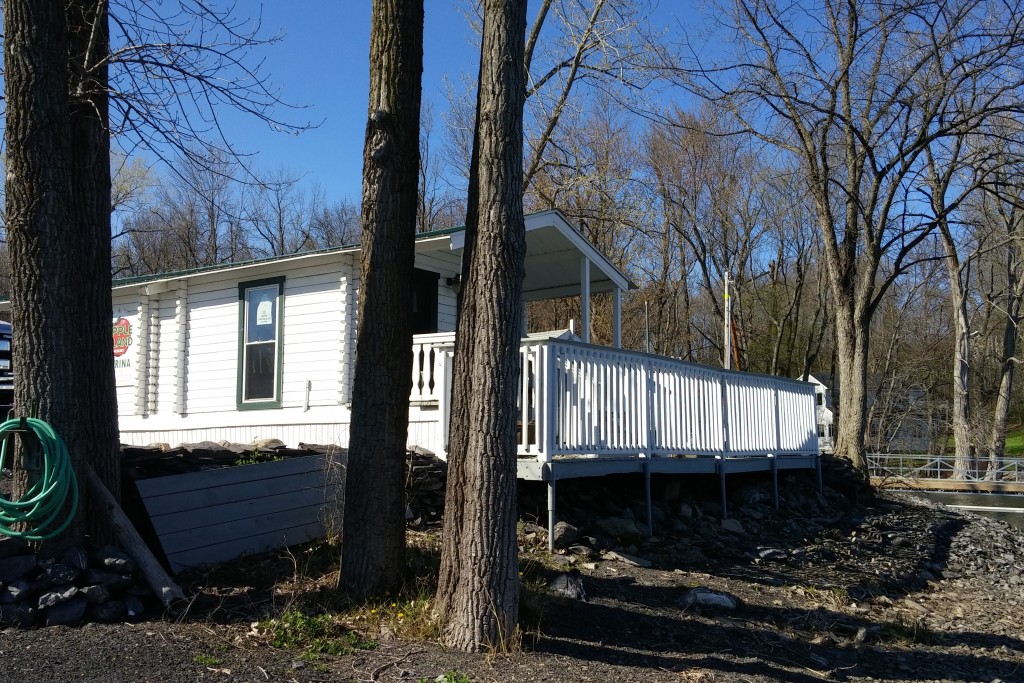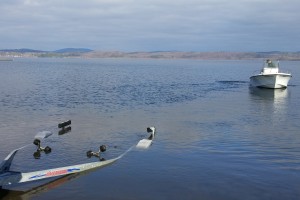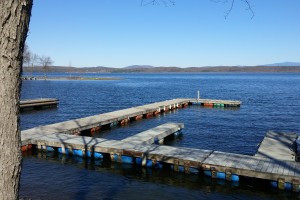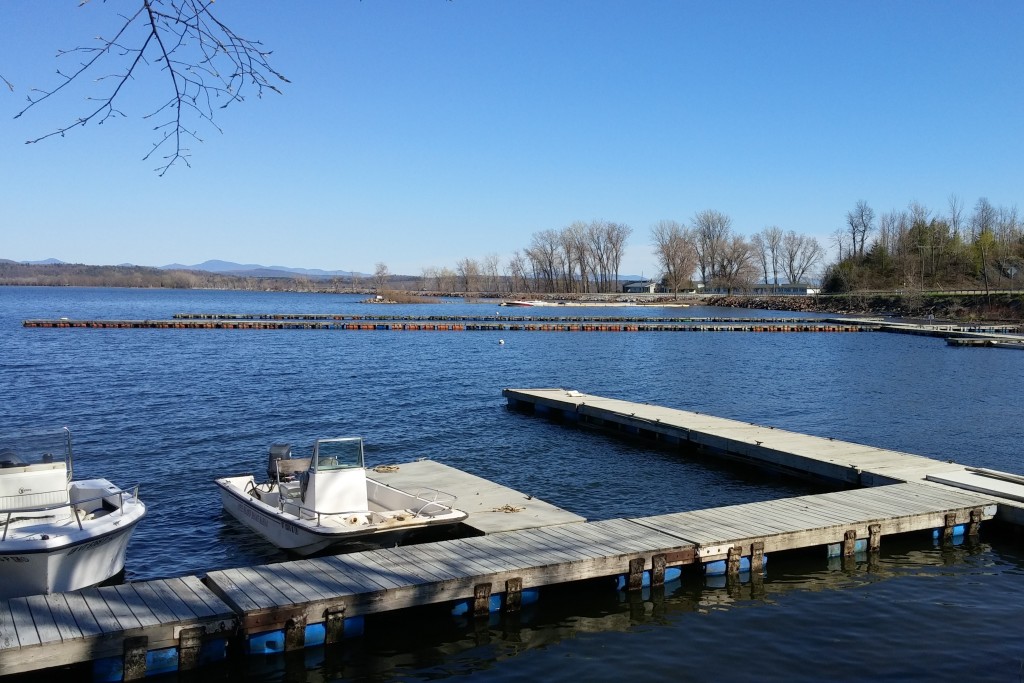Putting in the docks is a 4-man job: one to drive the front-end loader that lifts the dock segments and places them in the water, one to stand on the dock segments as they are assembled, one to stand in the water to wrangle the segments so that they can be bolted together and one to drive the work boat to tow the segments into place so that they can be anchored in place.
I was the in-water wrangler. I was dressed in hip-waders. They insulated me pretty well, but the 58-degree water was still chilly. I wish I had a picture of me in the waders, but I don’t. No one was thinking of taking photos during the 3 days it took to assemble the docks. It was intense, physical labor. I slept well each night.
The process was to assemble 4 to 6 dock segments, then tow them into place, bolt them to the previously-installed dock segments and then attach the anchors. I would stand in the water while the segments were connected, then hop aboard and ride the segment to their anchored location.
This work was preceded by two days of “pulling up the anchors”. Each anchor consisted of a large block of concrete resting on the bottom of the lake, somewhere between 5 and 30 feet below the surface. Attached to each block was a long chain. The chains were left on the bottom over the winter and had to be pulled to the surface each spring. When the docks were removed in the fall, all of the anchor chains were connected by a small line that ended at a location on shore. The “pulling up the anchors” task involved taking the end of the line, getting aboard the work boat and carefully following the line to each sunken chain. We would pull the chain to the surface, attach a buoy, cut the line we had followed and then follow the line to the next chain.This was dirty, cold, wet work that chafed the hands. I found some rubber-gripped gloves that helped, but it was still unpleasant. I was a mess at night – damp and stained with rust and kelp.
All of the work was made more difficult by the failure of the “new” work boat. A used but improved work boat had been purchased, but it failed its initial trials. It ran fine for about 10 minutes, but died when full power was applied. The vendor took it back and returned it two days later, supposedly fixed. But it failed again, this time a considerable distance from shore. We had to call the Coast Guard. We eventually got the engine started again and made it back to port under our own power, but were met by the local fire department when we arrived. The Coast Guard had notified them that we might need a water rescue.
Embarrassing.
But we got the job done. We did the launch/gas docks first, then the rental docks.
I almost feel like a sailor now.
Almost.





